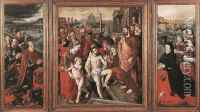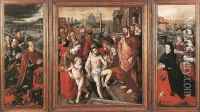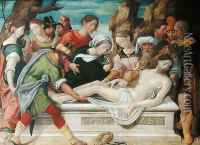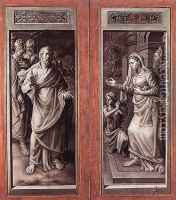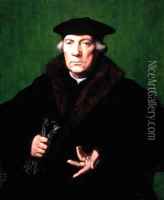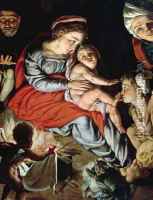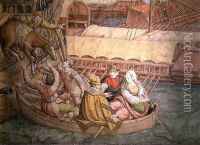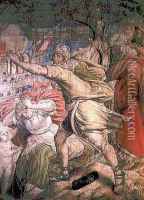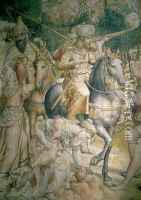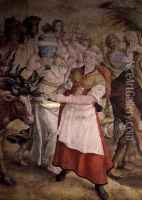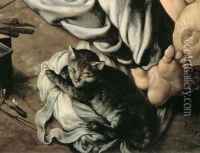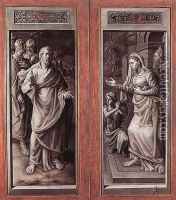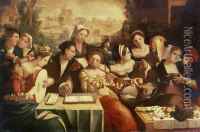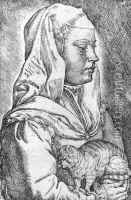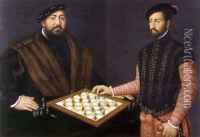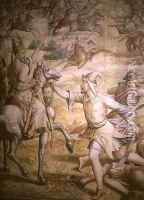Jan Cornelisz Vermeyen Paintings
Jan Cornelisz Vermeyen, also known as Jan Mayo or Johannes de Barbaru, was a significant Northern Renaissance artist born in Beverwijk, Netherlands, around 1500. He was a versatile artist known for his painting, drawing, and tapestry designs. Vermeyen's early life is not well documented, but it is believed that he began his artistic training in Haarlem and later moved to Amsterdam.
Vermeyen became particularly recognized for his work as a portraitist and his contributions to tapestry design. His portraits are noted for their sophisticated use of color and insightful characterizations of the sitters. By the 1520s, Vermeyen had established himself as a master, and in 1529, he was appointed court painter to Margaret of Austria, the Regent of the Netherlands. His position allowed him to travel, and in 1530 he accompanied the Emperor Charles V on his journey to the Diet of Augsburg, an event which he documented in a series of detailed drawings.
One of Vermeyen's most notable projects was the commission to design a series of tapestries depicting the Battles of Tunis, which took place in 1535. These tapestries were commissioned by Charles V to celebrate his victory over the Ottoman forces at Tunis. Vermeyen's accurate and vivid drawings served as the basis for the tapestries, which were woven in Brussels, the center of European tapestry production at the time.
Despite his success with tapestry designs, Vermeyen continued to paint and received numerous commissions for altarpieces, religious works, and portraits throughout his career. His style was influenced by the Italian Renaissance, and he was known for his ability to blend Northern Renaissance realism with the idealized forms of the Italian tradition.
Jan Cornelisz Vermeyen's influence extended beyond his lifetime as his tapestry designs continued to be reproduced well into the 17th century. He died in Brussels in 1559, leaving behind a legacy that was appreciated for its contribution to the Northern Renaissance and the development of tapestry as a prestigious art form.
